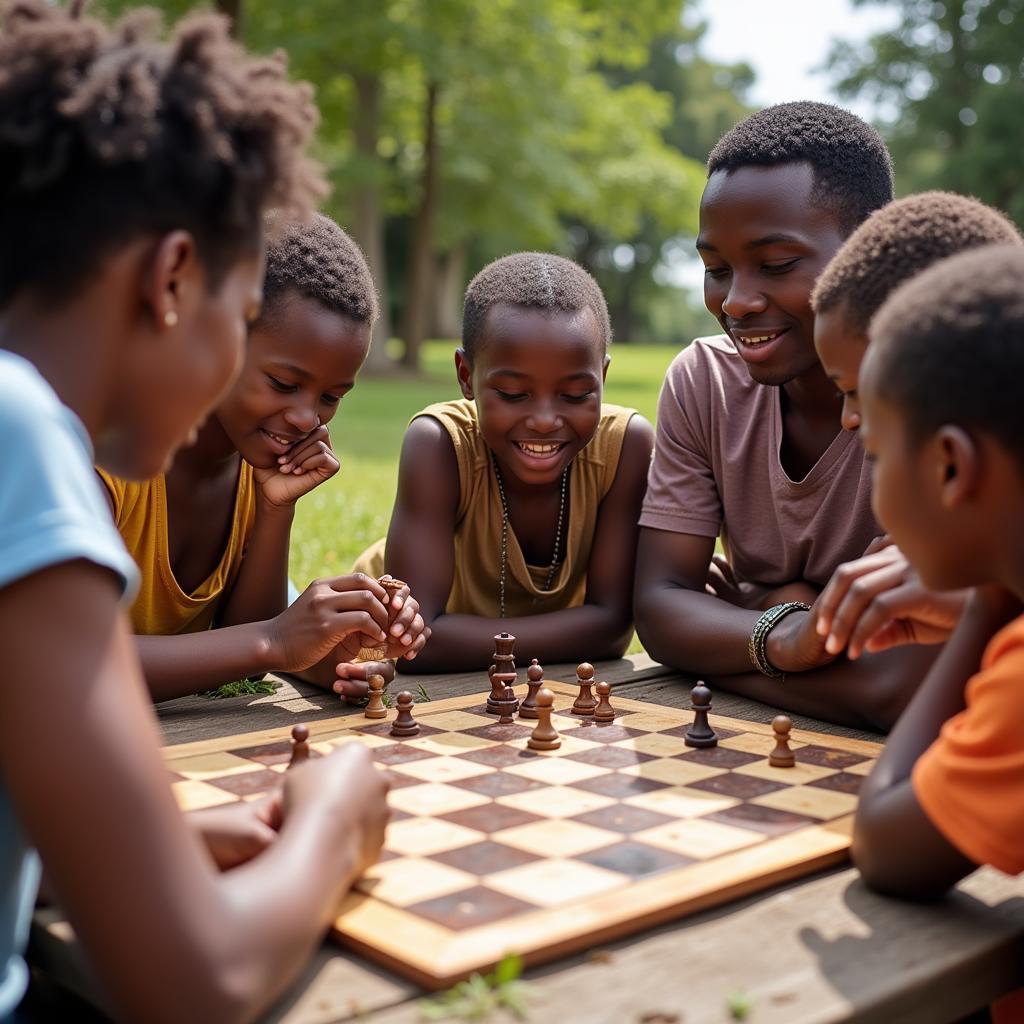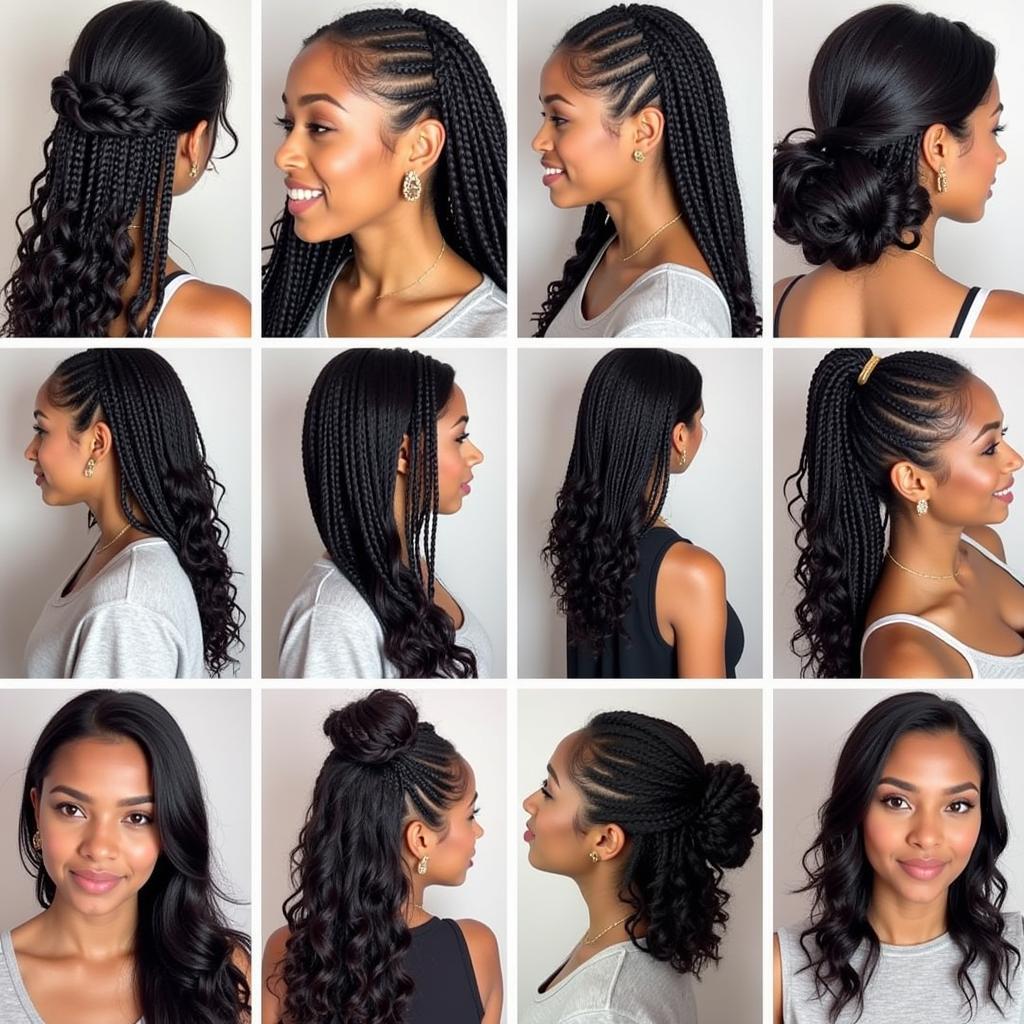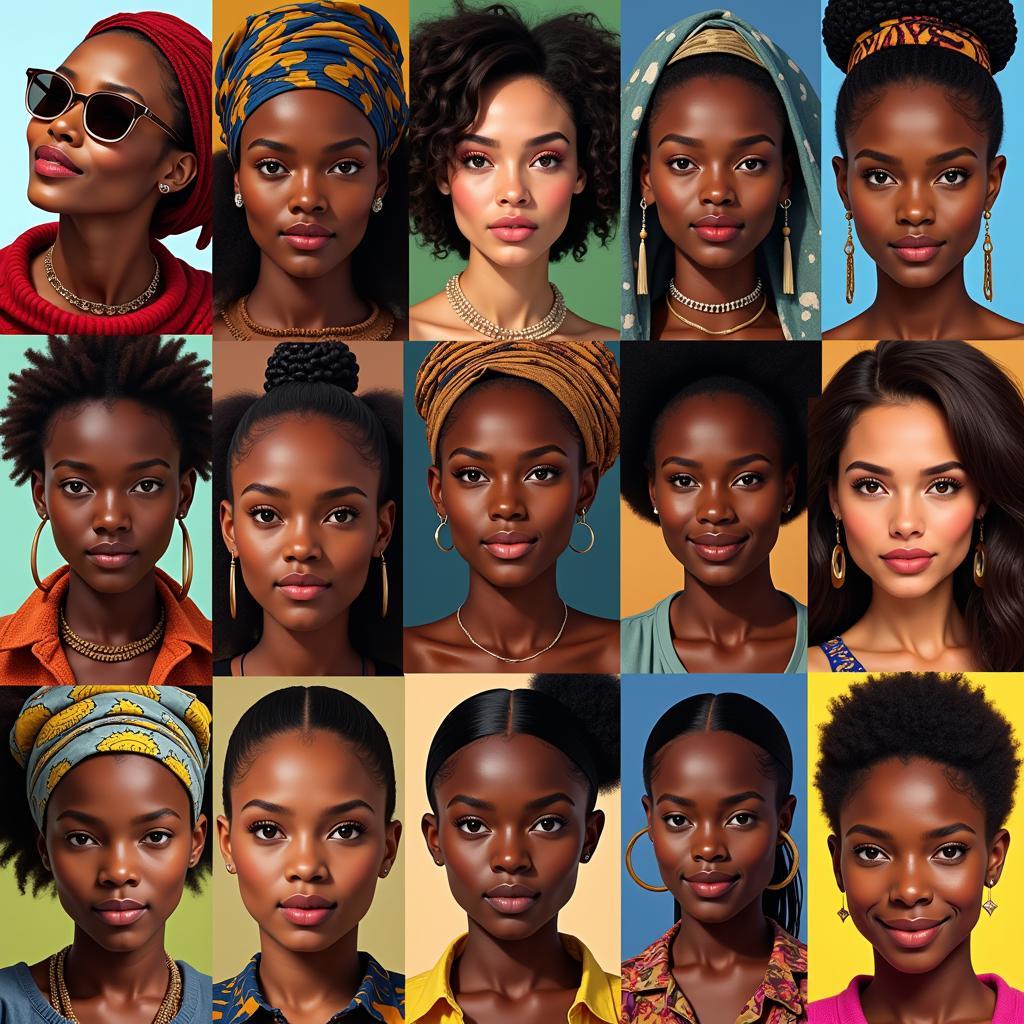African Folk Dance for Children’s Choirs
African folk dance offers a vibrant and engaging way to enhance children’s choir performances. It adds a visual dimension to the music, enriching the storytelling and bringing African culture to life. Exploring the rich tapestry of African folk dance traditions can open up a world of rhythmic expression and cultural understanding for young singers.
Discovering the Rhythms: African Folk Dance Styles for Children
There are countless African folk dance styles, each with its own unique characteristics, rhythms, and storytelling elements. Choosing the right dance for a children’s choir performance depends on the age of the children, the type of music being performed, and the overall message you want to convey. Some popular and accessible styles for children include:
- Gumboot Dancing (South Africa): Originating in the South African mines, gumboot dancing uses rhythmic stomping and clapping on wellington boots to create percussive music. It’s highly energetic and visually striking, making it a great choice for upbeat songs.
- Agbadza (Ghana): This Ewe dance is characterized by its fast tempo and energetic movements, often involving intricate footwork and hand gestures. It’s a celebration of life and community, perfect for songs with a joyous theme.
- Indlamu (South Africa): A traditional Zulu dance, Indlamu features high kicks and powerful movements, symbolizing strength and pride. It’s a more challenging dance but can be adapted for older children and experienced choirs.
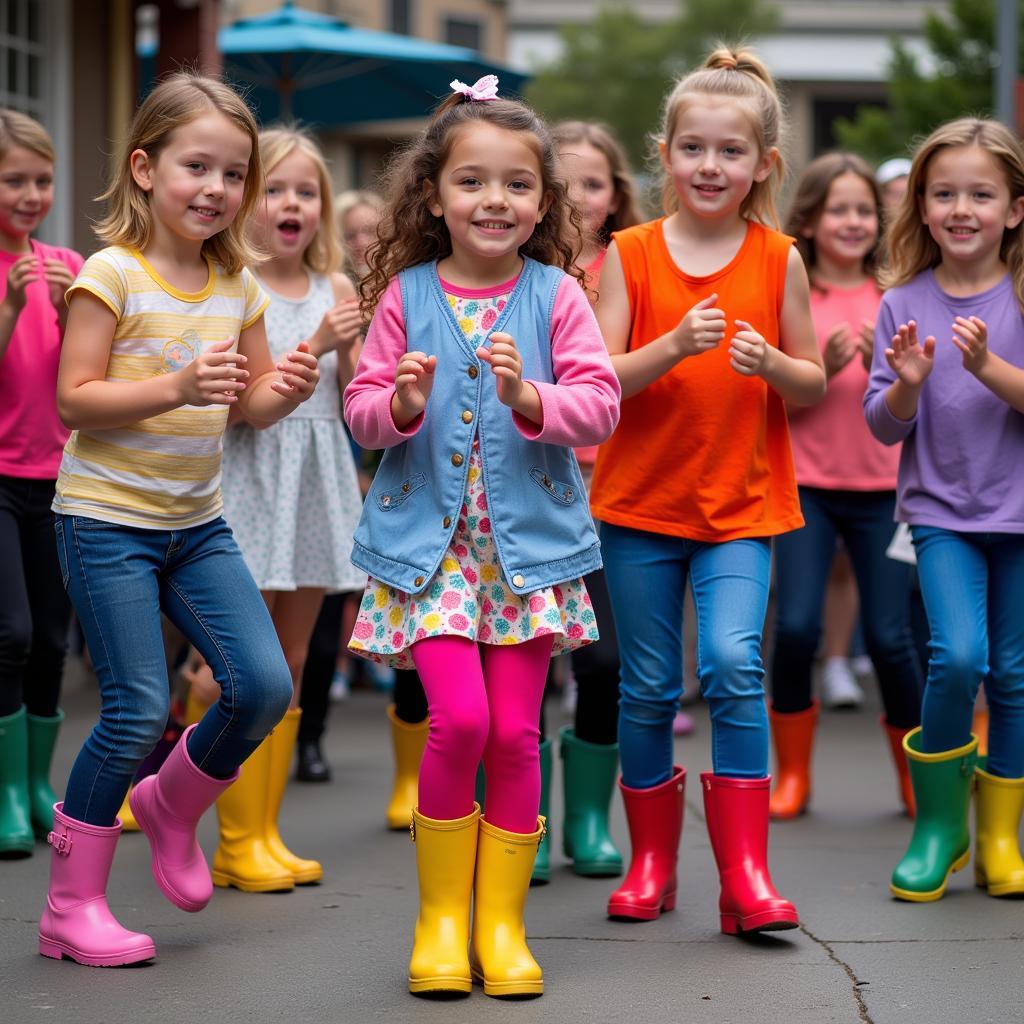 Children Performing Energetic Gumboot Dance
Children Performing Energetic Gumboot Dance
Incorporating African Folk Dance into Choir Performances
Integrating dance into a choir performance requires careful planning and practice. It’s essential to choose dances that complement the music and allow the children to express themselves while still maintaining vocal control. Here are some tips for successful integration:
- Start Simple: Begin with basic steps and gradually introduce more complex movements as the children gain confidence.
- Connect the Dance to the Music: Ensure the dance movements reflect the rhythm and mood of the song.
- Tell a Story: Use the dance to enhance the narrative of the song, conveying emotions and cultural context.
- Consider Costumes: Authentic or inspired costumes can add visual appeal and cultural authenticity to the performance.
- Practice Makes Perfect: Regular rehearsals are crucial to ensure synchronization between singing and dancing.
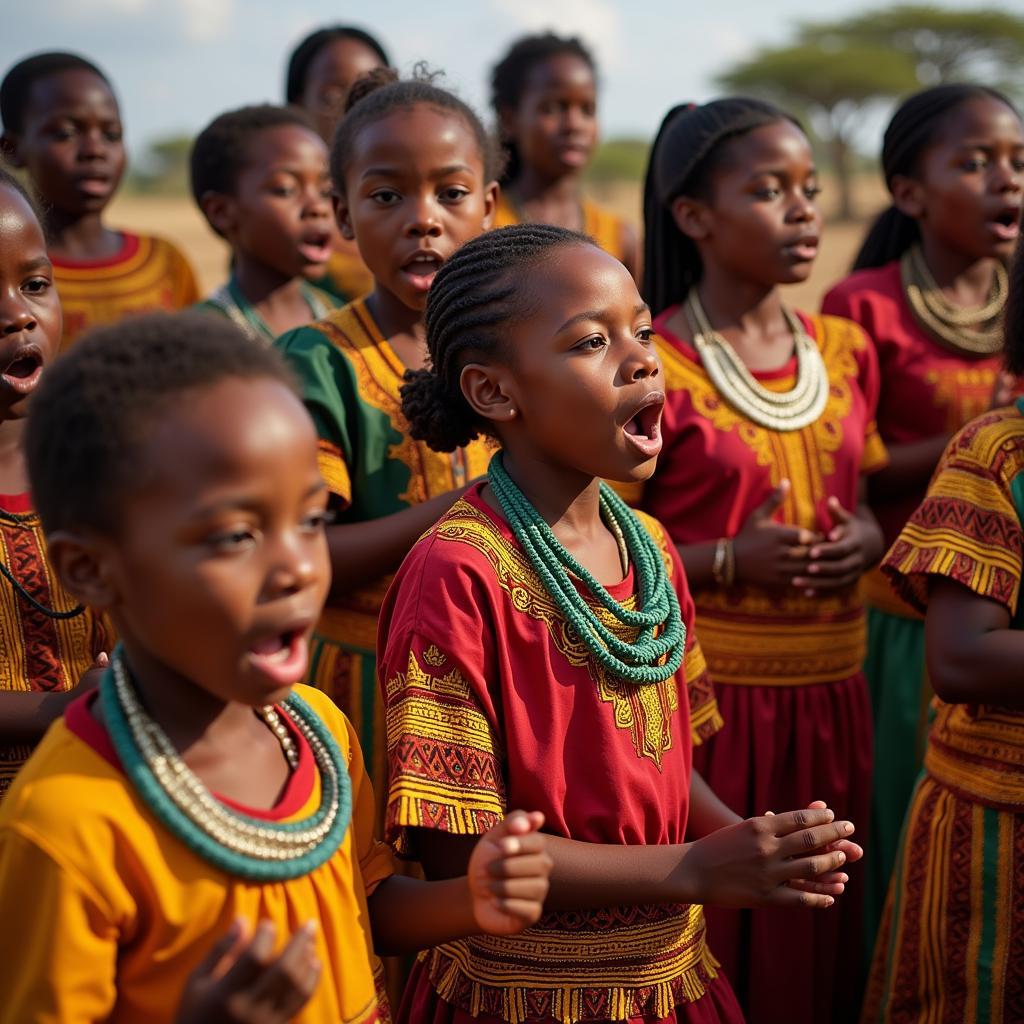 African Children's Choir Performing with Traditional Dance
African Children's Choir Performing with Traditional Dance
Benefits of African Folk Dance for Children
Beyond enhancing performances, African folk dance provides numerous benefits for children:
- Cultural Appreciation: It exposes children to the richness and diversity of African cultures.
- Physical Development: Dance improves coordination, balance, and overall fitness.
- Creative Expression: It provides a creative outlet for children to express themselves through movement.
- Teamwork and Collaboration: Learning and performing together fosters teamwork and cooperation.
- Confidence Building: Mastering new skills and performing in front of an audience boosts self-confidence.
“Introducing children to African folk dance is like opening a window to another world,” says Dr. Abeni Adebayo, a renowned ethnomusicologist specializing in African music and dance. “It allows them to connect with a rich cultural heritage while developing valuable physical and social skills.”
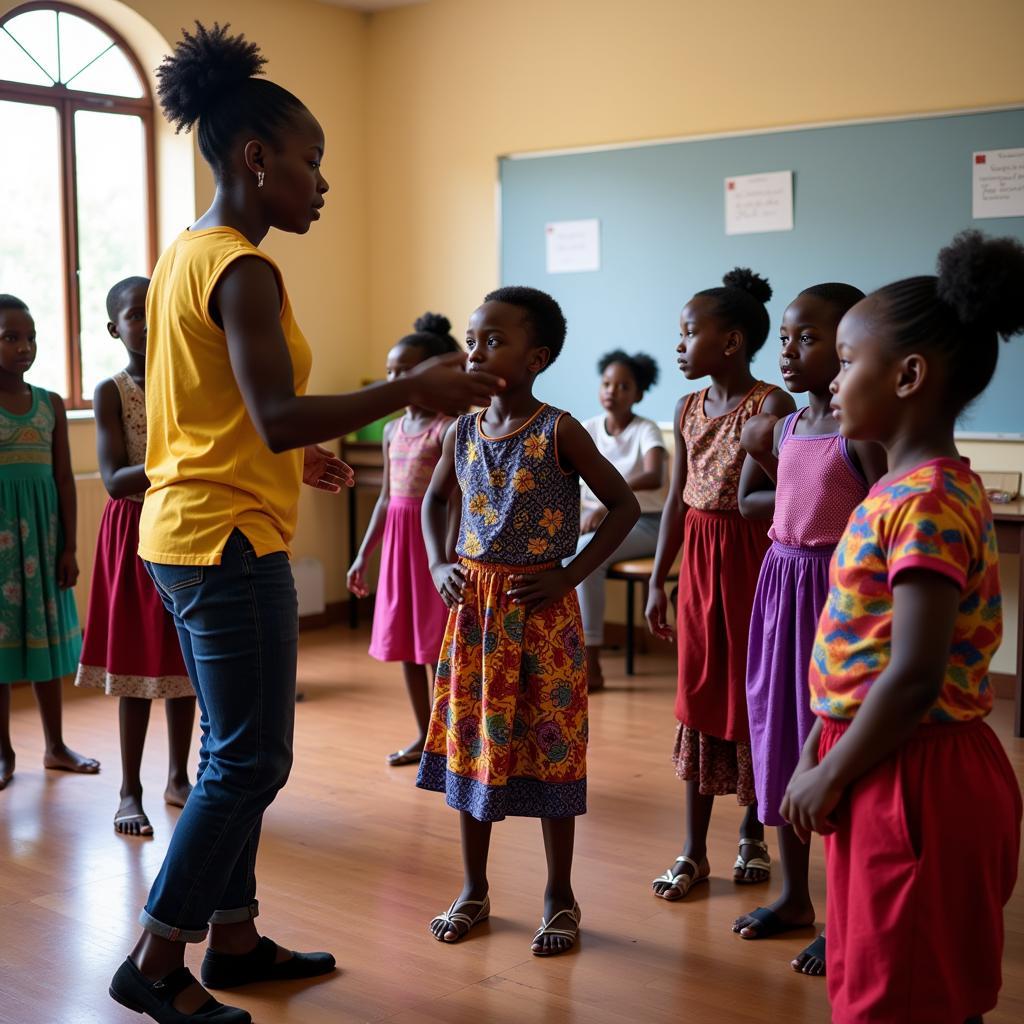 African Children Learning Traditional Dance Moves
African Children Learning Traditional Dance Moves
Conclusion
African folk dance for children’s choirs provides a powerful and engaging way to enhance performances and celebrate African culture. By incorporating these dynamic traditions, choirs can offer audiences a truly enriching and memorable experience while fostering valuable skills and cultural understanding in young singers. Exploring the world of African folk dance can transform a children’s choir performance from a simple recital into a vibrant celebration of music, movement, and cultural heritage.
FAQ
- What are some easy African folk dances for beginners?
Gumboot dancing and simple rhythmic clapping patterns are good starting points for young children. - Where can I find resources for teaching African folk dance?
Online platforms, cultural centers, and dance instructors specializing in African dance can offer valuable resources. - How do I choose appropriate costumes for an African-themed performance?
Research different African cultures and their traditional attire to ensure respectful and authentic representation. - What are the key elements to consider when integrating dance into a choir performance?
Synchronization between singing and dancing, the narrative of the song, and the overall message are crucial. - How can I ensure the children are enjoying the dance and not feeling overwhelmed?
Start with simple steps, make it fun, and encourage creativity and self-expression. - What are some examples of African musical instruments that can accompany the dances?
Djembe drums, maracas, and various other percussion instruments can enhance the rhythmic experience. - How can I involve parents or community members in the process?
Invite them to workshops or performances to celebrate the cultural exchange and support the children.
Suggested Further Exploration
- Exploring the Diversity of West African Drumming
- Creating Authentic African Costumes for Performances
- The Power of Music in African Storytelling
For further assistance, please contact us at: Phone: +255768904061, Email: [email protected] or visit us at Mbarali DC Mawindi, Kangaga, Tanzania. We have a 24/7 customer service team.
